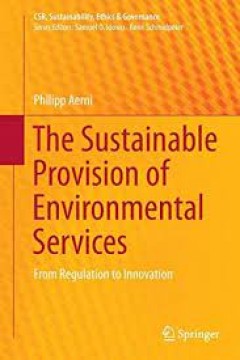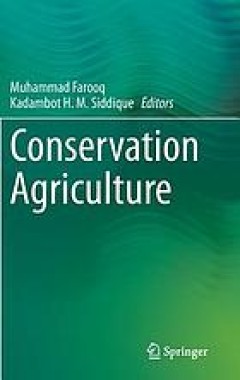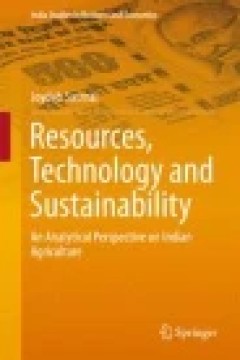Filter by

Japan's Dietary Transition and Its Impacts
An examination of the transformation of the Japanese diet from subsistence to abundance and an assessment of the consequences for health, longevity, and the environment.OCLC-licensed vendor bibliographic record.
- Edition
- -
- ISBN/ISSN
- 9780262305389
- Collation
- 1 online resource (xii, 229 pages) :illustrations.
- Series Title
- -
- Call Number
- -

Certifying China :the rise and limits of transnational sustainability governa…
"Using original data and mixed methods, the book offers a comprehensive study on the spread of transnational sustainability certification in China's agri-food supply chains"--OCLC-licensed vendor bibliographic record.
- Edition
- -
- ISBN/ISSN
- 9780262369619
- Collation
- 1 online resource.
- Series Title
- -
- Call Number
- -

America by the numbers :quantification, democracy, and the birth of national …
How new techniques of quantification shaped the New Deal and American democracy. When the Great Depression struck, the US government lacked tools to assess the situation; there was no reliable way to gauge the unemployment rate, the number of unemployed, or how many families had abandoned their farms to become migrants. In America by the Numbers , Emmanuel Didier examines the development in the…
- Edition
- -
- ISBN/ISSN
- 9780262357401
- Collation
- 1 online resource (408 pages).
- Series Title
- -
- Call Number
- -

Cultivating science, harvesting power :science and industrial agriculture in …
Christopher R. Henke reveals how agricultural scientists and growers in California have cooperated - and struggled - in shaping the state's multi-billion-dollar farm industry.OCLC-licensed vendor bibliographic record.
- Edition
- -
- ISBN/ISSN
- 9780262275286
- Collation
- 1 online resource (xi, 226 pages) :illustrations, map.
- Series Title
- -
- Call Number
- -

Feeding the world :a challenge for the twenty-first century
A realistic yet encouraging look at how society can change in ways that will allow us to feed an expanding global population.This book addresses the question of how we can best feed the ten billion or so people who will likely inhabit the Earth by the middle of the twenty-first century. He asks whether human ingenuity can produce enough food to support healthy and vigorous lives for all these p…
- Edition
- First MIT paperback edition.
- ISBN/ISSN
- 9780262283861
- Collation
- 1 online resource
- Series Title
- -
- Call Number
- -

The Sustainable Provision of Environmental Services from Regulation to Inno…
This book addresses the ability of market-based instruments to improve the sustainable provision of environmental services. The author combines field research and insights from the multi-stakeholder dialogue at the FAO to analyze the gap between the predictions provided by theory and the corresponding outcomes in practice. In particular, the author challenges the theory behind Payments for Envi…
- Edition
- -
- ISBN/ISSN
- 978-3-319-19345-8
- Collation
- -
- Series Title
- -
- Call Number
- -

Cost-Benefit Studies of Natural Resource Management in Southeast Asia
This book applies cost-benefit analysis techniques in the management of environment and natural resources in developing countries of the Southeast Asian region and presents a compendium of studies conducted by researchers supported by the Economy and Environment Program for Southeast Asia (EEPSEA). It emphasizes the close relationship between the environment and natural resources and economic d…
- Edition
- 1
- ISBN/ISSN
- 978-981-287-393-4
- Collation
- Ekonomi
- Series Title
- -
- Call Number
- 330

Chile’s Salmon Industry : Policy Challenges in Managing Public Goods
This book is the first to analyze Chile’s salmon farming industry in discussing industrial development in terms of the management of public goods. The book highlights important aspects of learning and capacity development, environmental sustainability, institutions, and social welfare or inclusiveness. With aquaculture now providing almost half the global fish harvest, Chile’s salmon farmi…
- Edition
- 1
- ISBN/ISSN
- 978-4-431-55766-1
- Collation
- XVIII, 210
- Series Title
- Policy Challenges in Managing Public Goods
- Call Number
- 630

Conservation agriculture
Conservation agriculture?consisting of four components including permanent soil cover, minimum soil disturbance, diversified crop rotations and integrated weed management?is considered the principal pathway to sustainable agriculture and the conservation of natural resources and the environment. In this book leading researchers in the field describe the basic principles of conservation agricult…
- Edition
- -
- ISBN/ISSN
- 9783319116204
- Collation
- -
- Series Title
- -
- Call Number
- 630

Resources, Technology and Sustainability
This book uses sound theoretical frameworks and econometric techniques to rigorously analyze and explain the conditions of sustainable growth in agriculture. It further investigates how management of natural resources and technological advances can enhance productivity and ensure sustainable growth in agriculture. Optimal control theory, dynamic optimization problems and theory of risk and unce…
- Edition
- Ed. 1
- ISBN/ISSN
- 978-981-10-0895-5
- Collation
- -
- Series Title
- -
- Call Number
- -
 Computer Science, Information & General Works
Computer Science, Information & General Works  Philosophy & Psychology
Philosophy & Psychology  Religion
Religion  Social Sciences
Social Sciences  Language
Language  Pure Science
Pure Science  Applied Sciences
Applied Sciences  Art & Recreation
Art & Recreation  Literature
Literature  History & Geography
History & Geography